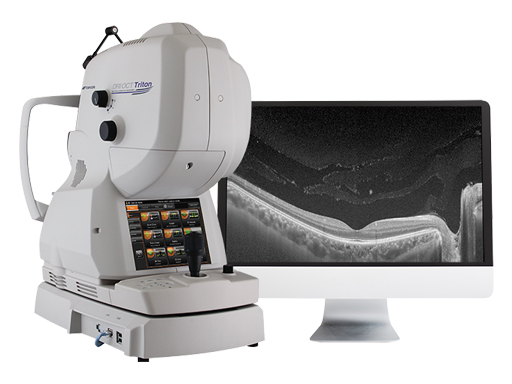Taking a proactive approach to your eye health can prevent problems before they affect your sight. That’s why we provide advanced OCT scans, which are like an ultrasound or CT scan of the eye.
Our hospital-grade Triton OCT system provides ultra-definition 3D imaging and analysis of your eye, through all the microscopic layers of the retina and optic nerve.
The scans allow our experienced optometrists to detect subtle changes, caused by a number of key eye conditions, much earlier and more accurately. Macular degeneration, glaucoma and diabetic retinopathy are issues we regularly identify.


This helps protect your vision and general health, with faster diagnosis of potential issues, and treatment at the earliest stage.
“We are extremely proud that our patients have benefited from OCT scans since 2011. Our extensive OCT experience helps us to accurately interpret the results, and make referrals more effectively.
It has saved the sight of many clients, and in some instances, it has even helped to save their life….which is why it is standard for all our clients.”
Dan Sanders - Optometrist



